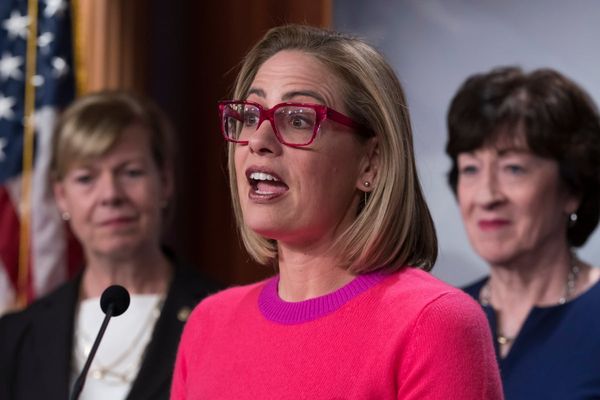Among the green, wet-season growth of Kakadu National Park's savanna woodlands, Bessie Andudjimi Coleman is speaking to her ancestors.
"[Telling] our old people that we're coming back on country to burn and clean the country, and to watch [over] our young people," she says.
"We've been doing this from generation to generation. We learned from our ancestors."
The Jawoyn traditional owner, whose country covers southern parts of the World Heritage-listed park in the Northern Territory, watches on as rangers light fires in the speargrass.
"We've got to take off some fuel [from the grass] that builds up sometimes … so our animals can eat fresh grass and get fat, look after the country," she says.
"If you don't look after the land, the land won't look after you."
Wet-season burning
Northern Australia's tropical savannas, where native speargrasses can grow over two-metres tall, are among the most fire-prone regions in the world.
Aboriginal people have a long history of managing their country and reducing the risks of wildfires in the region with fine-scale mosaic burns.
More recently, Indigenous ranger groups have started to earn valuable carbon credits by preventing emissions from severe fires later in the year.
Most of this planned savanna burning occurs from May to July, in the cool, dry months of the early dry season.
But at Kakadu National Park, rangers and traditional owners have also conducted burns during wetter months in January and February.
Senior ranger and Balomo custodian Joseph Markham said wet-season burning was especially effective for areas with high fuel loads.
"If you light the old [dry] fuels in among the new growth, it'll burn," he says.
"It's a really good way to take that fuel out without a huge, raging fire."
"Low-intensity fires also help to protect our little animals: the possums, bush rat, and sugar gliders in these big hollow logs."
Rebalancing landscapes
Kakadu fire management officer Anna Pickworth said wet-season burns could "reduce the flammability of the landscape over time" by burning new speargrass growth before it seeded.
She said native speargrasses were thought to have become unnaturally dominant when Aboriginal people were forced from their lands and traditional burning practices were disrupted.
"When people were moved off country to missions and stations, there were a lot of frequent and probably mostly hot fires … and that promoted speargrass to become more dominant," she says.
"That's why we're using wet-season burning as a technique to reduce that speargrass over time."
She said Kakadu burned about 35 per cent of the park's almost 20,000 square kilometres each year, with about 4 to 5 per cent burned during the wet season.
"Over the years, if you do really good, early dry-season burning and wet-season burning, you can bring much more diversity into the landscape, more barriers to fire," she says.
"As the country becomes less flammable in general over time, then we may be able to burn less of the park each year."
Tackling climate change
Further south on Jawoyn country at Nitmiluk National Park, rangers have scaled up their wet-season burning in recent years — including for some of the park's spinifex country.
"There are really important conservation values in the sandstone heath, and a lot of threatened species," fire program manager Ben Lewis says.
"We burn it in the wet season to try and keep the scale and intensity of the fires down and reduce the fire risk later on in the year when it can be vulnerable to lightning."
Ben Lewis says wet-season burning was another tool for rangers to manage fire in a changing climate.
"[It's important to have] a lot of strategies up your sleeve to be able to respond to [climate] variability."
Anna Pickworth said climate change was making fire management even "more critical".
"The landscape is getting hotter and drier, and the wet season is actually getting a little bit bigger, but over a shorter period of time."
"So it just makes it much more important to do all our early dry-season burning and our wet-season burning."
Over the last decade, more and more Indigenous ranger groups in the Top End have become involved in savanna-burning programs to reduce hot, uncontrolled fires late in the year.
Rohan Fisher, from the fire-tracking website NAFI, said the increase in early burning had resulted in a "massive reduction" in fire across the north.
"If we compare fire frequency for the seven years from 2000 to 2006 with fire frequency more recently, we see over 650,000 square kilometres of country with less fire than there used to be," he says.
"That's an area almost three times the size of Victoria with less fire.
"On a global scale, that's a remarkable outcome."







